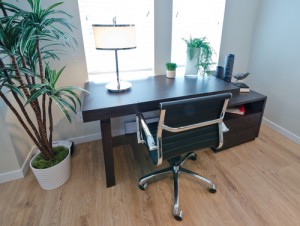 Testing
Testing
It can be difficult to address broad, unidentified air quality issues, so a good first step for many homeowners who want to minimize indoor air pollution is a professional assessment. Once you know what specific pollutants are present in your home, it will be easier and less costly to fix the problem.
Houseplants
Houseplants are an easy and natural option to help ease indoor air pollution. Though they don't make a huge dent, specific types like ivy and pothos can filter toxins out of the air while also livening up a room.
Ventilation
Ventilation is often overlooked during the colder months, but airflow is even more important when the house is sealed tightly. Make sure any areas that might be prone to leaks, dampness and mold, such as bathrooms, attics and basements, are well-ventilated.
Air Filters
The majority of HVAC systems have air filters attached, which are helpful at removing some indoor air pollutants. However, not all filters are the same. Cheaper, low-quality filters won't be as effective as higher quality filters, so invest in the more reliable options. Don't forget to check the air filter monthly and change it as soon as dirt and dust begins to accumulate. Dirty air filters block airflow and can damage an HVAC system.
Air Cleaners
Small steps may be be enough in some homes, particularly those with ongoing air quality issues or family members who suffer from respiratory ailments. In many households, a standalone air cleaning system is the best option. Don't be tempted by small, one-room air purifiers. These are often unreliable; a whole-house system is the most effective way to keep the air in your home safe and clean.
Contact Rodenhiser Plumbing, Heating & Air Conditioning today for more advice for working to minimize indoor air pollution in your Medway MA home.
Image via Shutterstock.com